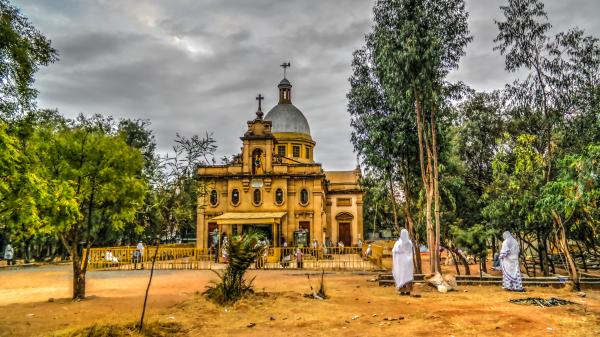The Ethiopian Calendar
The Ethiopian calendar is quite similar to the Julian calendar, which was the predecessor to the Gregorian calendar most countries use today.

Orthodox church in Ethiopia.
©iStockphoto.com/HomoCosmicos
This is the main calendar used in Ethiopia. It is also the official calendar in the Orthodox Tewahido Church in both Ethiopia and Eritrea.
Solar Calendar
It is a solar calendar, based on the time it takes Earth to make 1 full orbit around the Sun, also known as a tropical year or solar year.
Same Historical Roots
The Ethiopian calendar is based on the same astronomical calculations that lie behind today's Gregorian calendar and its predecessor, the Julian calendar.
The Ethiopian calendar is closely related to the Coptic and Julian calendars, but it is not quite the same.
13 Months in a Year
A year in the Ethiopian calendar is 13 months long, with 12 months of 30 days each. The last month has 5 days in a common year and 6 days during leap year.
Like in the Julian calendar, a leap year in the Ethiopian calendar happens every 4 years without exception.
Jesus' Birth Year Main Difference
The main point of difference lies in the calculation of the date of the birth of Jesus, which means that the Ethiopian calendar is 7 to 8 years behind the Gregorian calendar.
While most Christians celebrate Christmas on December 25, Ethiopians celebrate Christmas on January 7 along with many Orthodox Christian churches around the world.
Most other Orthodox churches use the Julian calendar. A few Orthodox communities use the Revised Julian calendar instead, which is one of the most accurate calendars ever developed.